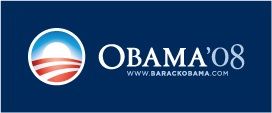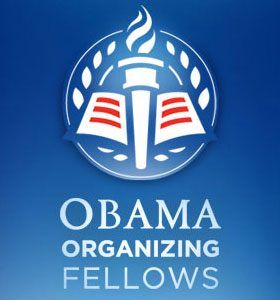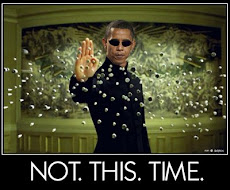Freedom is never granted and is never given; it is won and exacted.
A Philip Randolph
A Philip Randolph: For Jobs and Freedom
A. Philip Randolph was the most important civil rights leader to emerge from the labor movement. Throughout his long career, he consistently kept the interests of black workers at the forefront of the racial agenda. Whereas W. E. B. Du Bois argued that the problem of the twentieth century was “the color line,” Randolph concluded that it was the question of the “common man.”
Asa Philip Randolph (1889-1979) was born in Crescent City, Florida, and grew up in Jacksonville.The son of a Methodist minister he was brought up to value education, he attended high school at the Cookman Institute where he studied Greek and Latin and excelled in drama and public speaking.
Randolph was also brought up to take pride in his heritage and his abilities. He and his brother "never felt we were inferior to any white boy, never had that concept at all," he remembered, "and we were told, constantly and continuously that 'You . . . are not supposed to bow and take a back seat for anybody.'"
Graduating at the top of his class in 1907, Randolph began working for the Union Life Insurance Co. Although it was a well-respected job in the black community at the time, it did not hold Randolph's interest -- and neither did a series of odd jobs he tried after that. Inspired by W.E.B Du Bois 's book, The Souls of Black Folk and its critique of racism, Randolph was determined to get out of the South. In 1911 he found work on a steamboat headed for New York City.
Settling in Harlem, Randolph found work as switchboard operator in an apartment building, enrolled in the College of the City of New York and helped organize the Independent Political Council, a debate group.In 1913 Randolph courted and married Mrs. Lucille Campbell Green, a widow, Howard University graduate and entrepreneur who shared his socialist politics. She earned enough money to support them both. The couple had no children. A member of the Socialist party by 1916, and a popular street-corner orator, Randolph got a job doing political work for the Brotherhood of Labor, an employment office for African American migrants from the South and West Indian immigrants.
Randolph’s politics were rooted in the World War I era. A child of hard-working parents who respected learning . Working during the day and studying at the City College at night, Randolph broadened his intellectual horizons as he read modern economic and political writers, including Marx. This theoretical grounding predisposed him to view the black working class, not the black elite, as the major hope for black progress. His associations with socialists and the continuing urbanization of the black population strengthened his working-class orientation.
In New York, Randolph became familiar with socialism and the ideologies espoused by the Industrial Workers of the World. He met Columbia University Law student Chandler Owen, and the two developed a synthesis of Marxist economics and the sociological ideas of Lester Frank Ward, arguing that people could only be free if not subject to economic deprivation. At this point, Randolph developed what would become his distinctive form of civil rights activism, which emphasized the importance of collective action as a way for black people to gain legal and economic equality. To this end, he and Owen opened an employment office in Harlem to provide job training for southern migrants and encourage them to join trade unions.
Randolph’s first experience with labor organization came in 1917, when he organized a union of elevator operators in New York City. In 1919 he became president of the National Brotherhood of Workers of America, a union which organised amongst African-American shipyard and dock workers in the Tidewater region of Virginia. The union dissolved in 1921, under pressure from the American Federation of Labor.
In 1917 his career as an organizer and activist took off when he and Chandler Owen, a longtime associate, launched The Messenger, a monthly magazine that delved into politics, trade union news, and literary criticism, among other subjects. As editor, Randolph campaigned against lynching, U.S. participation in the First World War, and the segregation he witnessed in the trade union movement. In fact in 1919 he denounced the AFL as "the most wicked machine for the propagation of race prejudice in the country."
Because he believed black Americans would never gain political freedom without economic power, in 1918 Randolph helped organize the National Association for the Promotion of Labor Unionism Among Negroes. He also supported the National Brotherhood of the Workers an independent union organized in 1919 that combined black nationalism with trade unionism.
Impressed by Randolph's abilities, a group of Pullman porters invited him in 1925 to help organize their fledgling union, The Brotherhood of Sleeping Car Porters. Although it would take ten years for the Brotherhood to gain an AFL charter -- the first awarded to a union of black workers -- in 1937 the Brotherhood of Sleeping Car Porters would become the first black union to win a collective bargaining agreements.
The victory made Randolph the leading black figure in the labor movement. He headed the new National Negro Congress, an umbrella movement of mass organizations, but resigned in 1940, believing the group was controlled by communists. Through his success with the BSCP, Randolph emerged as one of the most visible spokespeople for African-American civil rights. In 1941, he, Bayard Rustin, and A. J. Muste proposed a march on Washington to protest racial discrimination in war industries, an end to segregation, access to defense employment, the proposal of an anti-lynching law and of the desegregation of the American Armed forces. Randolph's belief in the power of peaceful direct action was inspired partly by Mahatma Gandhi's success in using such tactics against British occupation in India. Randolph threatened to have 50,000 blacks march on the city; it was cancelled after President of the United States Franklin D. Roosevelt issued Executive Order 8802, or the Fair Employment Act. Some activists, including Rustin, felt betrayed because Roosevelt's order applied only to banning discrimination within war industries and not the armed forces. Nonetheless, the Fair Employment Act is generally considered an important early civil rights victory.
The movement continued to gain momentum, In 1942, an estimated 18,000 blacks gathered at Madison Square Garden to hear Randolph kick off a campaign against discrimination in the military, in war industries, in government agencies, and in labor unions. Following passage of the Act, during the Philadelphia transit strike of 1944, the government backed African-American workers' striking to gain positions formerly limited to white employees. Buoyed by these successes, Randolph and other activists continued to press for the rights of African Americans. In 1947, Randolph, along with colleague Grant Reynolds, renewed efforts to end discrimination in the armed services, forming the Committee Against Jim Crow in Military Service, later renamed the League for Non-Violent Civil Disobedience. When President Truman asked Congress for a peacetime draft law, Randolph urged young black men to refuse to register. Since Truman was vulnerable to defeat in 1948 and needed the support of the growing black population in northern states, he eventually capitulated. On July 26, 1948, President Harry S. Truman abolished racial segregation in the armed forces through Executive Order 9981.
Randolph and Rustin also formed an important alliance with Martin Luther King, Jr. In 1957, when schools in the south resisted school integration following Brown v. Board of Education, Randolph organized a Prayer Pilgrimage with Martin Luther King, Jr. In 1958 and 1959, Randolph organized Youth Marches for Integrated Schools in Washington, DC. At the same time, he arranged for Rustin to teach King how to organize peaceful demonstrations in Alabama and to form alliances with progressive whites. The protests directed by Rustin and King in cities such as Birmingham and Montgomery provoked a violent backlash by police and the local Ku Klux Klan throughout the summer of 1963, which was captured on television and broadcast throughout the nation and the world. Rustin later remarked that Birmingham "was one of television's finest hours. Evening after evening, television brought into the living-rooms of America the violence, brutality, stupidity, and ugliness of {police commissioner} Eugene "Bull" Connor's effort to maintain racial segregation." Partly as a result of the violent spectacle in Birmingham, which was becoming an international embarrassment, the Kennedy administration drafted civil rights legislation aimed at ending Jim Crow once and for all.
As a result of the groundwork laid 22 years earlier for the 1941 March on Washington, A. Philip Randolph was prepared for the leadership role he held in the 1963 March on Washington. With Bayard Rustin as the main organizer of the march, Randolph was able to unite the many groups and leaders that comprised this national call for masses of people to take action.
Randolph finally realized his vision for a March on Washington for Jobs and Freedom on August 28, 1963, which attracted over 250,000 to the nation's capital. The rally is often remembered as the high-point of the civil rights movement, and it did help keep the issue in the public consciousness. However, when President Kennedy was assassinated three months later, Civil Rights legislation was stalled in the Senate. It was not until the following year, under President Lyndon B. Johnson, that the Civil Rights Act was finally passed. In 1965, the Voting Rights Act was passed. Although King rightly deserves great credit for these legislative victories, it is hard to overestimate the importance of Randolph's contributions to the civil rights movement.
While expanding his targets, Randolph never forgot the interests of black workers and was a constant critic of discrimination in some unions. The originator of the March on Washington in 1963, Randolph aimed to obtain government sponsorship of black jobs. Although his goal was overshadowed by the demands of the southern civil rights movement, Randolph’s understanding of the economic needs of blacks predated the riots that drew the nation’s attention to them. He also became a critic of the black power movement, which he believed was programmatically bankrupt.
Despite his concern for ordinary workers, Randolph’s style was intellectual and aloof. Perhaps because he believed in the controlling force of self-interest, he could not fully comprehend the social and psychological impetus for the black power movement. But his theoretical bent and rationality enabled him to construct political alliances and to choose and win significant labor and civil rights objectives.
Pullman Porters - Ordinary Men, Extraordinary History
A. Philip Randolph: Reading Pledge of the March on Washington















































